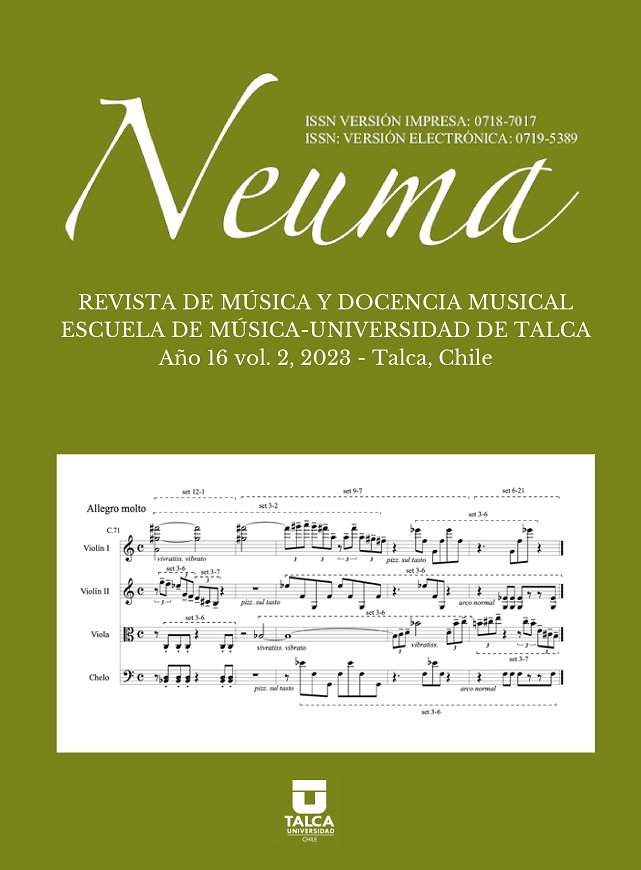Abstract
In this paper, I present a study of the tango Serial dodecafónico (1963) by Eduardo Rovira (1925-1980), composed in accordance with the rules of Schoenberg’s dodecaphonic technique, as stated by the composer himself. Through a structural analysis of the piece, we have endeavored to determine the nature of the serial strategies employed and their relationships with some of those utilized by Schoenberg. As a result of this work, the idiosyncratic uses of the technique are also described, ultimately being the most relevant aspects of the piece.
References
Adorno, Theodor (1949) (2006). Philosophy of New Music. Minneapolis: University of Minnesota Press
Boulez, Pierre P. (1952). “Schönberg is dead”, The Score no. 6, pp. 18-22.
Boulez, Pierre P. (1954) (1990). Hacia una estética musical. Caracas: Venezuela: Monte Avila, p. 25.
Bonds, Mark (2014). Absolute Music. The History of an Idea. New York: Oxford University Press.
Corrado, Omar (2012). Vanguardias al sur. La música de Juan Carlos Paz. Bernal: Universidad Nacional de Quilmes Editorial.
Dahlhaus, Carl (1989). The idea of absolute music. Chicago: University of Chicago Press.
Haimo, Ethan (1990). Schoenberg’s Serial Odyssey: The Evolution of his Twelve-Tone Method, 1914-1928. Oxford: Clarendon Press.
Kapp, Reinhard (1988). “Shades of the Double’s Original: René Leibowitz’s Dispute with Boulez”, Tempo, No. 165, pp. 2-16.
Lewin, David (1987). “On the ‘ninth-chord in fourth inversion’ from Verklärte Nacht”, Journal of the Arnold Schoenberg Institute, 10/1, pp. 45–64.
Martin, Leandro (2010). “Alberto Ginastera y el dodecafonismo: El Concierto para violín (1963)”, Opus, v. 16, n. 2, pp. 131-155.
Martin, Leandro (2016). “Tango y Dodecafonismo: Eduardo Rovira”, Quodlibet, 62, pp. 73-92.
Rodríguez, Edgardo J. (2009). “La técnica dodecafónica de Alberto Ginastera en la Cantata para América Mágica”, Revista Música e Investigación, 17, pp. 189-209.
Schoenberg, Arnold (1950) (1975). Style and Idea: Selected Writings of Arnold Schoenberg. London: Faber & Faber.

This work is licensed under a Creative Commons Attribution-NonCommercial 4.0 International License.
Copyright (c) 2024 Neuma (Talca)


